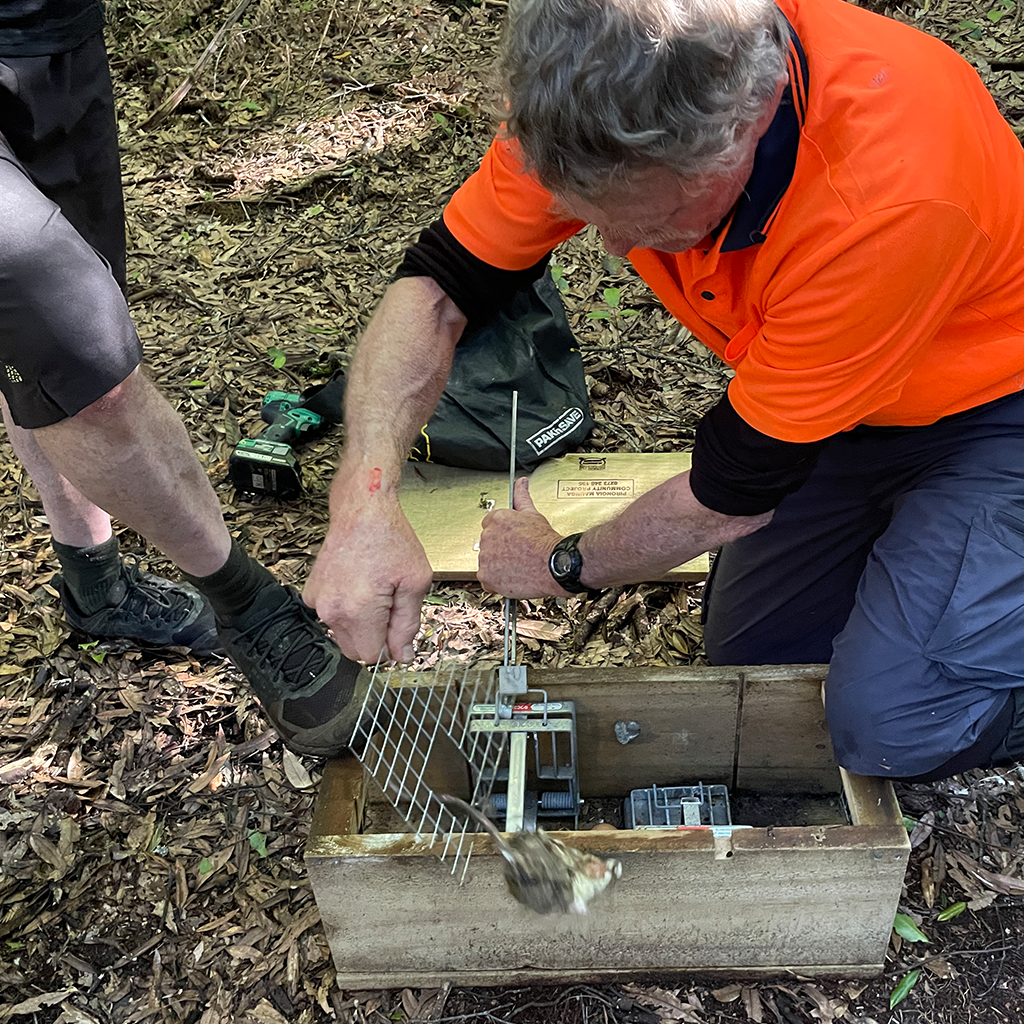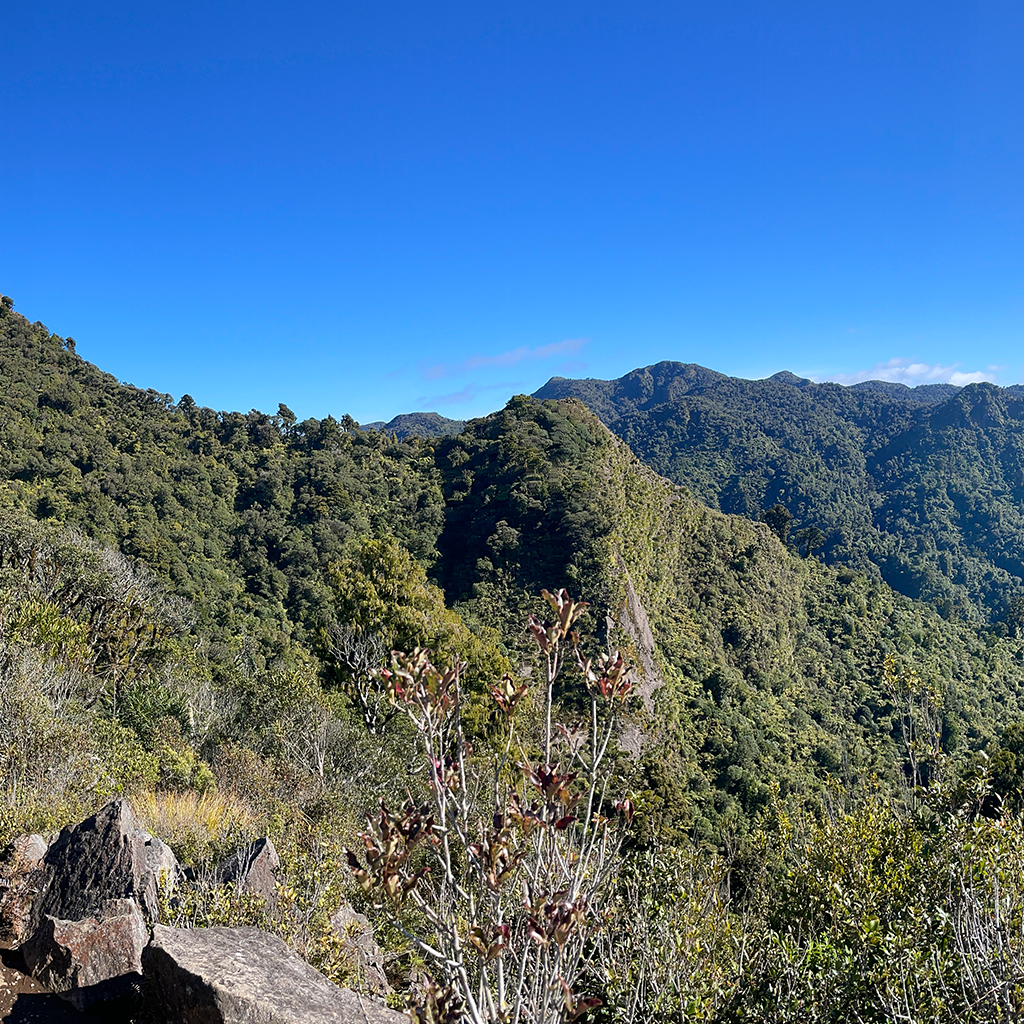This week is Conservation Week, so Sophie is sharing POET’s pre-lockdown trip to Pirongia and what we learnt about trapping:
On the 4th of August, Brian and I headed to Pirongia forest to meet Terry Lasenby from the Pirongia Te Aroaro o Kahu Restoration Society. Terry took us up the Mahaukura track to show us part of the trapline that he monitors. The traps he uses are designed to catch stoats, rats, ferrets and hedgehogs. The first trap we encountered was empty, but the bait was gone, so we replenished this by putting a dab of chocolate-scented bait on the egg inside the trap and rubbing some on the walls and entrance. The bait entices the pest into the trap where they step on the base plate, activating the mechanism to snap shut, killing them instantly.

When I first encountered the concept of trapping as a kid, I was horrified at the cute little animals being killed. Every living creature deserves the right to live. But the more I learnt about trapping, the more I realised how necessary it is to control the pest population. New Zealand’s native bush and wildlife, having been on an isolated island for over 80 million years, was never designed for the pests and predators that it now has in abundance. Since their introduction from the first Polynesian and European settlers, pest animals have eliminated 43% of native bird species and kill 25 million native birds a year. Pests not only kill native animals and their eggs, but also destroy their native habitat. New Zealand has the highest proportion of threatened indigenous species in the world. If every living creature deserves the right to live, then our native birds, bats, lizards, frogs and invertebrates do too.
In Pirongia, the trapping work that volunteers like Terry have done is making a huge difference to the native forest and wildlife. One of those projects was to bring kōkako back to the maunga. Thanks to the pest control done by the Pirongia Te Aroaro o Kahu Restoration Society, kōkako were re-introduced in 2017 and their multi-toned calls are beginning to be heard once more in the forest.
As we ascend towards the Mahaukura lookout, Brian, Terry and I are rewarded with our first catch – a rat. Terry extricates it from the trap by carefully lifting the plate and pulling it out by the tail, then flings the carcass into the bush for other predators to find. Along the way, we discover a few more traps that have been set off and Terry tells us horror stories about pest plants and animals. Particularly memorable, was the lethal, unforgiving nature of stoats. Although they may look adorable, stoats are known as ‘public enemy number one’, killing an average of 15,000 kiwi chicks a year. They also reproduce like crazy, with the help of adult males who impregnate baby stoats while they are still in the nest. They can “hold” their pregnancy for 9-10 months, so a female stoat could swim to a predator-free island solo (they can swim up to 1.5ks!), arrive and instantly give birth to 7-12 vicious killing machines.

We finally reach the look out, and what a view! The many peaks of the ancient volcano rise in front of us, surrounded by 13,500 hectares of native bush. A kārearea (New Zealand falcon) glides past us and riroriro (grey warblers), tui and pīwakawaka (fantails) fill the forest with their melody. It makes us feel like the luckiest people in the world to live in such a beautiful country. Let’s do our best to protect this special place.

References
https://www.doc.govt.nz/nature/pests-and-threats/animal-pests/
https://teara.govt.nz/en/introduced-animal-pests
https://www.wgtn.ac.nz/news/2019/05/nz-has-worlds-highest-proportion-of-species-at-risk
https://www.mtpirongia.org.nz/kokako
http://www.1080facts.co.nz/facts-and-figures.html
https://www.stuff.co.nz/national/blogs/in-our-nature/7535688/Wildlife-baddies-The-stealthy-stoat
https://www.doc.govt.nz/nature/pests-and-threats/animal-pests/stoats/
